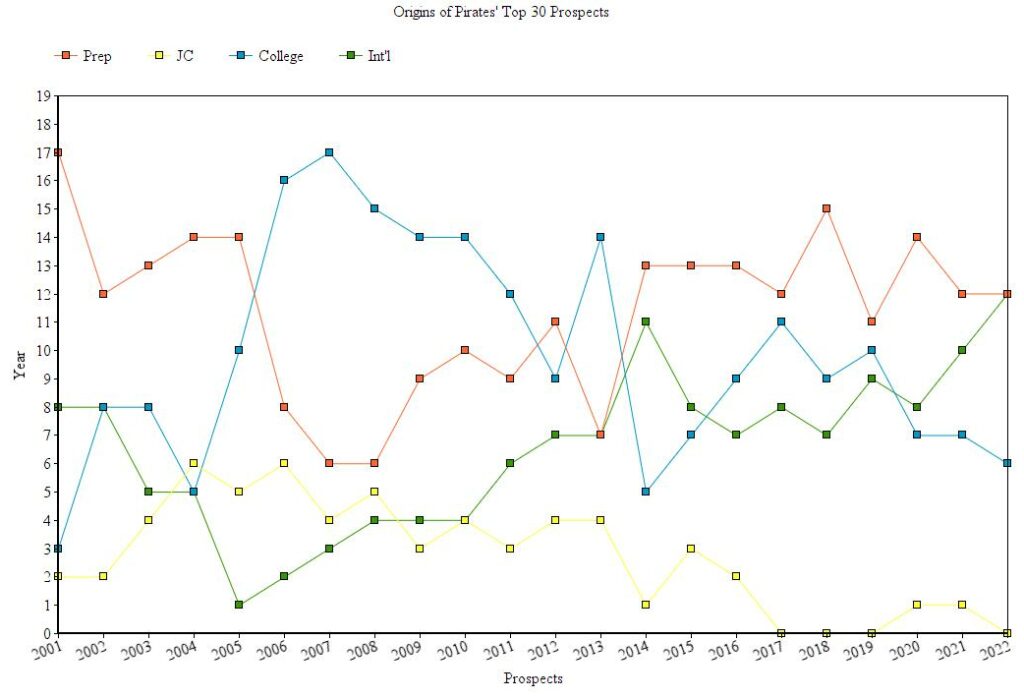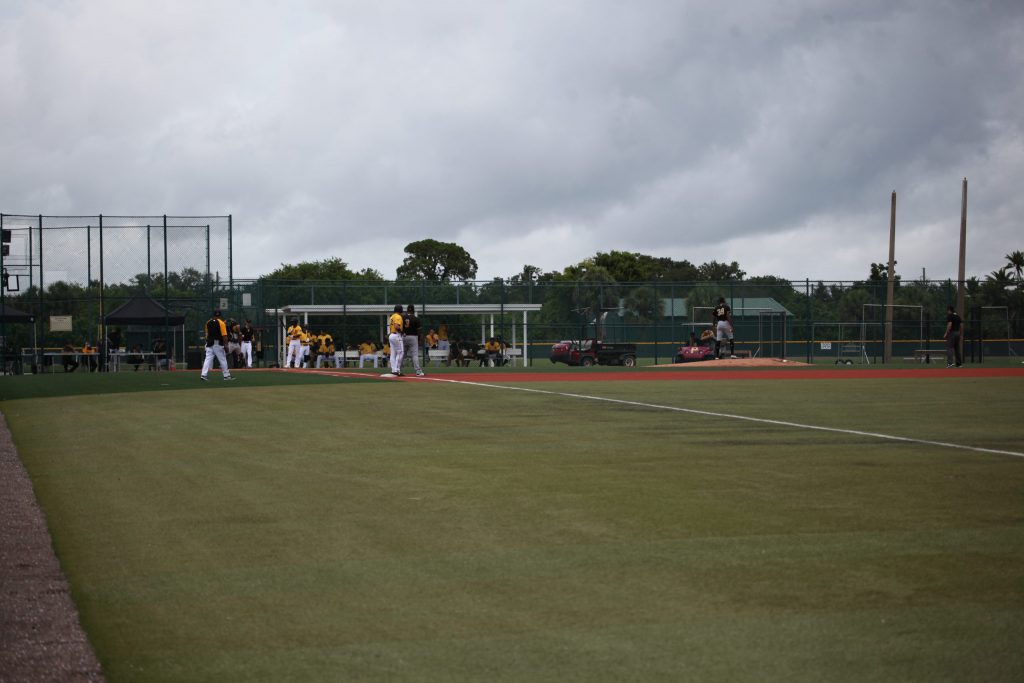This is part two of a three part series. Last week I tabulated the positions represented in the Pirates’ top 30s since 2001. This week it’s the players’ origins, i.e., prep, junior college, college or international. That’s as of the time the player first signed as a pro, whether it was with the Pirates or some other team.
As before, these are the Baseball America top 30s, except occasionally they run it to 31 or 32. Each list is the preseason top 30 for that season. The exception is 2022. That top 30 isn’t out yet, so I used BA’s 2021 midseason list.

For many years, the Pirates have been plagued by low-risk, low-reward strategies. (In reality, most of these have been moderate- to high-risk, low-reward strategies, like drafting college pitchers early or employing veteran, no-hit bench guys.) One of those strategies is illustrated above.
Dave Littlefield inherited a pretty good farm system that was heavy on prep and international players among the top prospects. As he steadily ran it into the ground, the proportion of college players shot upward. One of the BA prospects writeups after Littlefield was gone referred to his heavy focus on college players in the draft as a low-upside strategy. And, of course, Littlefield almost totally abandoned Latin America, as he wasn’t willing to spend any money there or maintain a decent facility. That’s evident from the graph, too.
Ironically, the only above-average players Littlefield’s system produced were two prep draftees — Andrew McCutchen and Neil Walker — and one international guy — Starling Marte. McCutchen and Walker combined for 65.6 bWAR, with McCutchen still active. Littlefield’s other four first rounders, all college pitchers, combined for 12.3 bWAR, all but 0.4 of it from Paul Maholm. (IMO, Maholm would be remembered very differently if he’d been able to play for some good teams.) Marte so far has piled up another 34.8 and counting.
The point here isn’t that Littlefield was a terrible GM. We already knew that. The point, at least based on the Pirates’ experience, is that if you want upside in your system, you can’t refuse to participate in the pools of prep and international talent. Of course, part of the problem was that the Pirates did a bad job of scouting college players (Bryan Bullington or Dan Moskos ring a bell?). Some teams have done a lot better with college guys, probably through the sinister use of devil magic. The Pirates, though, need prospects in both quality and quantity, and can’t afford to ignore major sources of them.
To the extent this means anything at all — execution certainly means at least as much as strategy — the Pirates are following a radically different path. Neil Huntington obviously brought about a better balance among the team’s top prospects, although it would have been a more productive balance if his front office had a clue how to develop prep pitchers.
Under Ben Cherington, the change has gotten even more extreme, although he obviously hasn’t eschewed college players. Happily, his first two top picks have been college hitters rather than pitchers. So, while there are a lot of other, often more important, factors at play in a system, the basic demographics have a much better look than maybe at any time in the past two decades.
A couple other comments:
**I don’t know how common the pattern is, but junior college draftees are clearly playing much less of a role in the Pirates’ system, or at least in their top 30s. That’s almost certainly due to the draft-and-follow process being effectively eliminated in 2007. The signing deadline for draftees was moved from a week before the next draft to a couple months after each draft. The Pirates used that process a little under Littlefield and heavily under Cam Bonifay. The top example was Jose Bautista, who then managed to be mis-evaluated by two Pirate GMs.
**Just to be clear, the numbers in the graph don’t represent how the Pirates acquired the player. This is especially notable with international guys, many of whom came in trades. That’ll be obvious with the next installment; in fact, I’ll have a fair amount to say about it then. It’s still clear, though, that a team looking to have a good system needs players from all possible sources.
THIS WEEK ON PIRATES PROSPECTS
Williams: MLB’s Treatment of Minor League Players is Inexcusable
Major League Baseball Absolutely Makes Money Off Minor Leaguers
Does a Top Farm System Lead to a Contender?
Demographics of the Pirates’ Prospects Over the Years — Origins
Robbie Glendinning Returns Stronger from Tommy John Surgery
J.C. Flowers: Righty Attacked Hitters At Two Levels in 2021
It’s All in Your Head: Deion Walker Showing Maturity Beyond His Years



